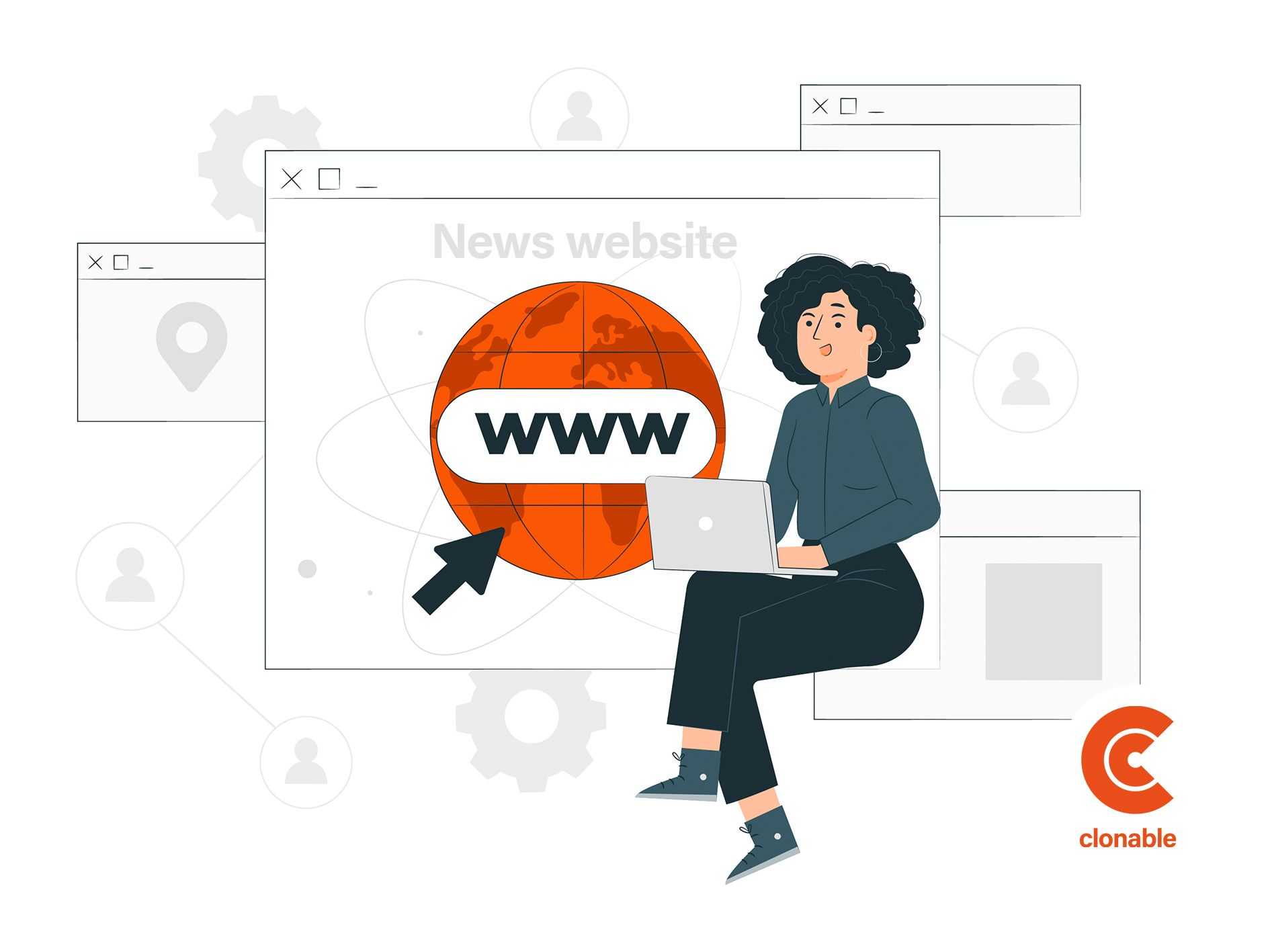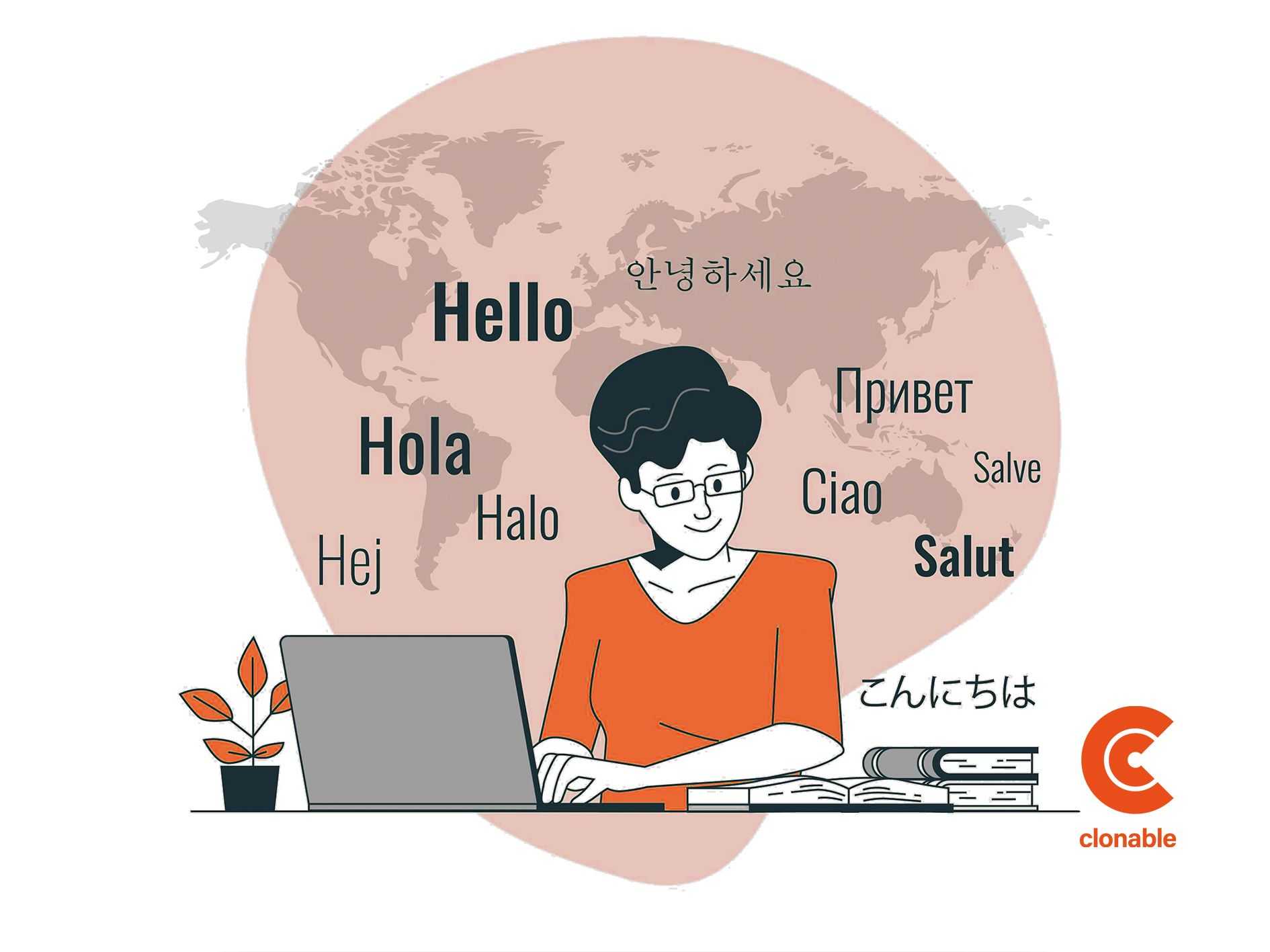8 most common mistakes when translating a website (and how to fix them)

Websites are increasingly being translated into multiple languages. Understandable, because if you want to appeal to an international audience, you need to offer your website in those languages. Unfortunately, those translations don't always go well. In this article, we discuss 10 of the most common mistakes made when translating a website - and how to fix them.
1. Improper use of automatic translation programs.
It is very easy these days to use an automatic translation program, such as Google Translate. However, using Google Translate alone is a bad idea. Google Translate does not have the quality you want for your Web site. You can use automatic translation programs as a base, but in almost all cases it is recommended to use a translation agency to do a check anyway. Especially with important items such as menus, terms and conditions, checkout pages (in the case of web stores), etc. In Clonable it is very easy to have a proofreader make adjustments so that the quality of machine translations can be brought to 99% tremendously fast. With much less cost and hassle.
2. Too little or too much information
When translating a website, it is important to find the right balance between text and images. Sometimes websites are translated with too little text, so the meaning is lost. On the other hand, there can also be too much information on a page, making it difficult to understand everything.
3. Wrong choice of words
Sometimes words are used in a translation that are not intended. This can be confusing to the reader and it can cause the message not to come across. So it is important to make the right choice of words.
4. Timestamps
When translating a Web site, it is important to consider time indications. Sometimes indications are used in a translation that do not match the time in the other language. This can be confusing for the reader and it can cause the message not to come across. So it is important to translate time indications correctly.
5. Use of slang
Sometimes words are used in either the original text or the translation that are not easy to translate because they are so-called slang. This can be confusing for the reader and it can cause the message not to come across. So it is important to make the right choice of words. Both in the original text and the translation.
6. Use of jargon
Jargon is a type of special words used in a particular industry. When translating a Web site, it is important to make sure the jargon is translated properly. Otherwise, like slang, it can be confusing to the reader and the message may not come across. Also note that not all professional translators know your jargon. So either look for a translator who does, or have an extensive keyword research done. The latter also helps to better understand the needs of foreign-language visitors and to optimize search engine rankings.
7. Spelling and technical errors
When translating a Web site, it is important to make sure there are no spelling and technical errors in the translation. These can cause a translation to not be taken seriously.
8. Use of numbers
When translating a website, it is important to make sure that the numbers are translated properly. English, for example, remains the main language in the (financial) world. And the English number system differs from all other languages. One hundred thousand is written in English as '100,000', with a comma and not a period. And nine and a half becomes '9.5', with a period.
Translating your website using a plugin or other translation solution?
As we discussed in a previous post, there are many options available for translating a website. You can translate your website using plugins, for example WPML for WordPress / WooCommerce, and there are also other types of plugins, also for other systems. However, this also has many disadvantages, mainly because the configuration is often a lot of hassle, the translation quality leaves much to be desired, the capabilities of the plugins are limited and it often makes the websites a lot slower.
Clonable is one of the best ways to easily translate and internationalize your website. You can translate any existing website and blog within seconds using our simple and intuitive website translation software. Instead of building a whole new website and having to transfer all the content, possibly having it translated, and maintaining two sites, with Clonable you will have a foreign site within 5 minutes. Because it is a live copy, changes to the original site are automatically made (and translated) on the cloned site. Adjustments to existing pages are automatically translated.
What about you? Which translation solution will you choose? If you need a website translated, contact our Clonable team. We will be happy to help you find the best possible solution for your needs.






